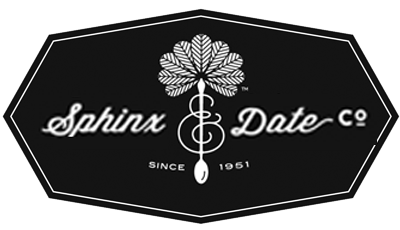What was once thought of as a mystical fruit, only available in one neighborhood in Arcadia, is now appearing all over the Valley and beyond.
Black Sphinx Dates have a rich history that can be traced back to 1928, and were once known to be found only in a neighborhood called Mountgrove, located at 47th Street and Lafayette.
New date palms come from offshoots rather than seeds, which grow around the base of the tree. When date trees get to be a certain age, they stop producing offshoots. The Black Sphinx date trees in the Arcadia neighborhood have been around for over 80 years, and many of them may be approaching this stage. As they age, height and location have also made harvesting more challenging.
Some believe that without these trees in Mountgrove, Black Sphinx dates will be extinct. This is a myth; offshoots from the trees have been sold for many years, so Black Sphinx dates are no longer unique to the Arcadia neighborhood.
“The general belief when we first took over the business in 2012 was that the original Sphinx grove had aged to a point it wouldn't reproduce, thus threatening the future of the variety. We are excited to hear of more and more young offshoots and dates becoming available through Arizona farmers and via efforts at the ASU Date Palm grove.” - Rebecca Seitz, Co-Owner at Sphinx Date Co.
The ASU Polytechnic Date Palm Grove is a public date farm located in Mesa. It has two acres of over 40 different varieties of dates, making it the largest public date farm in the United States. Offshoots are available periodically for purchase at the grove, which has allowed more people around the Valley to harvest them.
Along with ASU, there are a number of people in the valley who are growing Black Sphinx trees with offshoots, but most do not produce the dates for commercial use.
Historically speaking, Roy Franklin discovered a Black Sphinx seedling on a property on West Glenwood Avenue in Phoenix in 1928. This was a completely new discovery—Franklin soon realized this particular kind of date did not exist anywhere else, making it a novelty. When Frank Cullen Brophy and Ed Peterson took over date operation with Franklin in 1934, they decided to try to grow dates commercially.
Dates became a sweet delicacy during World War II and Arizona’s date industry thrived. In the 1950s, however, heavy rainfall spoiled most of the dates in the Valley, prompting the Yuma area and California growers to become more prominent. At its peak, the Valley had approximately 600 acres of date trees; in 1964 there were no more than 100 acres. Around this time farmers began focusing on Medjool dates, which grew larger than other date varieties and were easier to maintain.
Black Sphinx dates are different from other dates in many ways; they are considered to be a wet date, meaning that they have more juice and a softer texture. They are smaller than Medjool dates and have a honey flavor, which differs from the caramel flavor people often describe when tasting Medjool dates. Many commercial farmers choose not to invest in Black Sphinx dates because it’s a risky business; they are more perishable, delicate and harder to grow than other dates.
